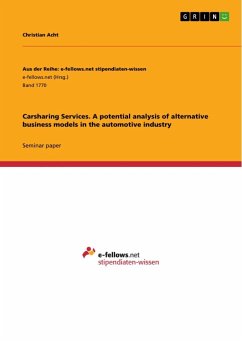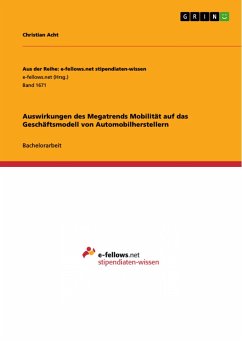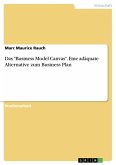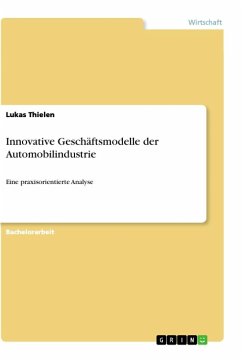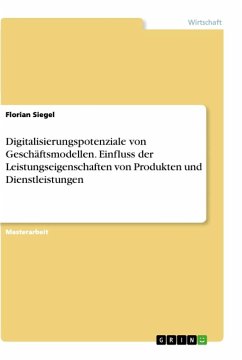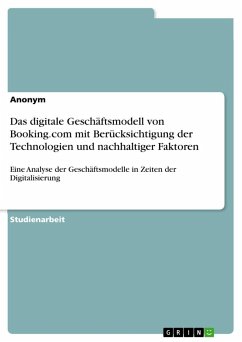Seminar paper from the year 2015 in the subject Business economics - Business Management, Corporate Governance, grade: 1,3, University of Marburg (Research Group Technology and Innovation Management), course: Tutorial, language: English, abstract: Carsharing is rapidly growing service that gains more and more acceptance among car drivers. By now, alternative business models exist in search of new customers. This term paper aims to evaluate the potential of alternative carsharing business models in the automotive industry. Therefore, it will first set theoretical foundations by introducing different forms of carsharing and business model concepts. In a second step, dominant forms will be exemplified by applying it to a business model framework. In a last step, the author will make use of a SWOT analysis to examine potentials of each carsharing business model. This paper will exclusively concentrate on business-to-customer carsharing services on the German market. Other forms of the shared mobility will not be considered.Carsharing is a special form of the so-called access based consumption. It refers to transactions that are market mediated but without transfer of property. The term carsharing (or short-term auto use) describes a principle where individuals gain advantage from private car use without the costs and commitments of ownership. Core char-acteristics are a short rental period, simple access to vehicles and good transition to other forms of mobility. This way of utilization is applicable for intermediate travel and routine activities. Even though carsharing emerged in Europe between the 1940s and 1980s, it ultimately became popular in the 1990s. Since then, it is spreading and growing all over the continent. Among others, one crucial factor for this development is that by 2020 55 per cent of the world population is expected to live in cities, which will lead to considerable space, infrastructure and environmental problems. Thus, the possession ofa private car becomes more and more unattractive as overstrained infrastructures make a smooth flow of traffic impossible. Carsharing has to be distinguished from other types of shared mobility solutions like ride sharing concepts such as Uber, which are not treated in this paper.
Hinweis: Dieser Artikel kann nur an eine deutsche Lieferadresse ausgeliefert werden.
Hinweis: Dieser Artikel kann nur an eine deutsche Lieferadresse ausgeliefert werden.

